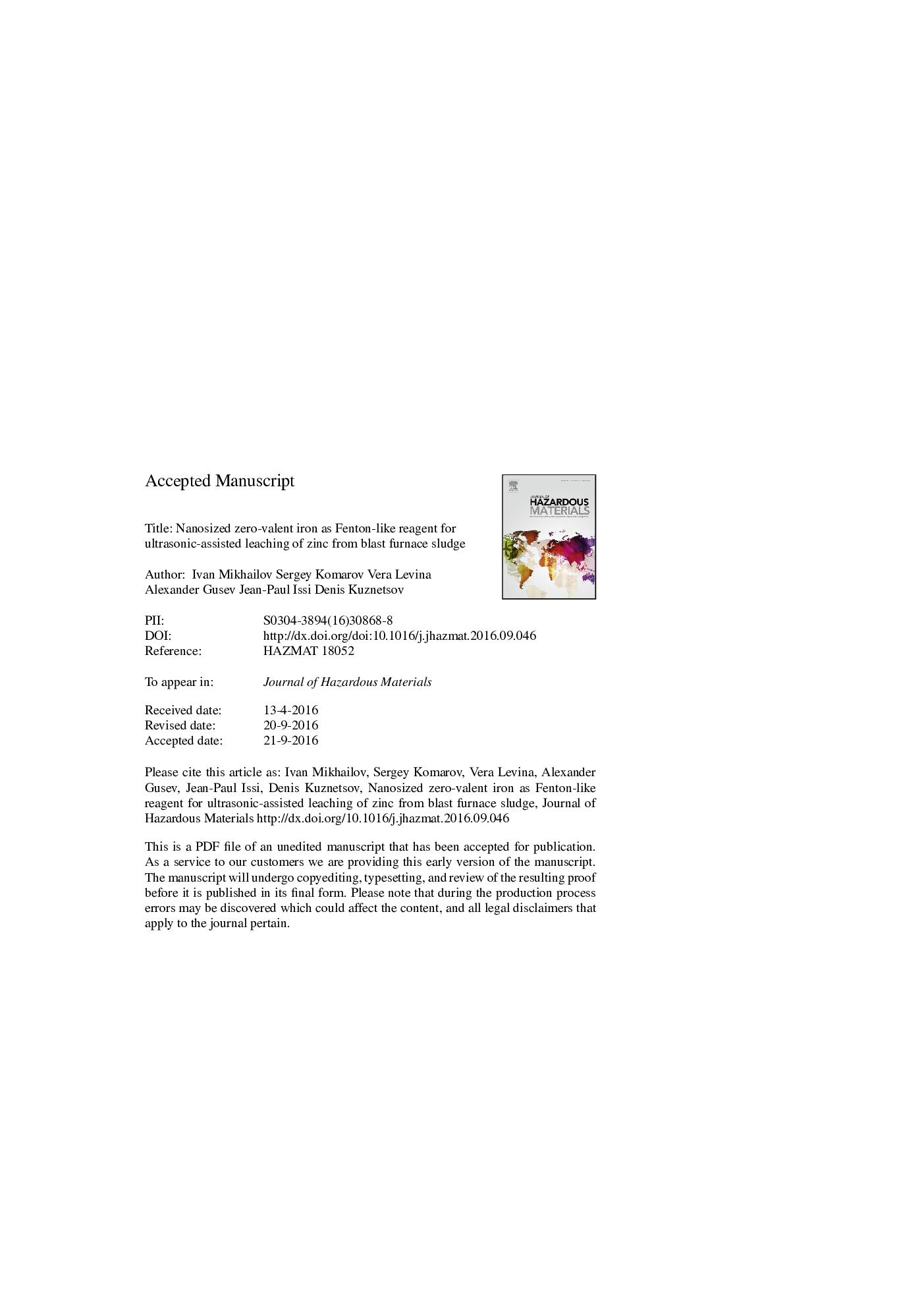| Article ID | Journal | Published Year | Pages | File Type |
|---|---|---|---|---|
| 4980081 | Journal of Hazardous Materials | 2017 | 21 Pages |
Abstract
Ultrasonic-assisted sulphuric acid leaching combined with a Fenton-like process, utilizing nanoscale zero-valent iron (nZVI), was investigated to enhance the leaching of zinc from the blast furnace sludge (BFS). The leaching of iron (Fe) and zinc (Zn) from the sludge was investigated using Milli-Q water/BFS ratio of 10 and varying the concentration of hydrogen peroxide, sulphuric acid, the temperature, the input energy for ultrasound irradiation, and the presence or absence of nZVI as a Fenton reagent. The results showed that with 1Â g/l addition of nZVI and 0.05Â M of hydrogen peroxide, the kinetic rate of Zn leaching increased with a maximum dissolution degree of 80.2%, after 5Â min treatment. In the absence of nZVI, the maximum dissolution degree of Zn was 99.2%, after 15Â min treatment with 0.1Â M of hydrogen peroxide. The rate of Zn leaching at several concentrations of hydrogen peroxide is accelerated in the presence of nZVI although a reduction in efficiency was observed. The loss of Fe was no more than 3%. On the basis of these results, the possible route for BFS recycling has been proposed (BFS slurry mixed with sulphuric acid and hydrogen peroxide is recirculated under ultrasonic irradiation then separated).
Related Topics
Physical Sciences and Engineering
Chemical Engineering
Chemical Health and Safety
Authors
Ivan Mikhailov, Sergey Komarov, Vera Levina, Alexander Gusev, Jean-Paul Issi, Denis Kuznetsov,
